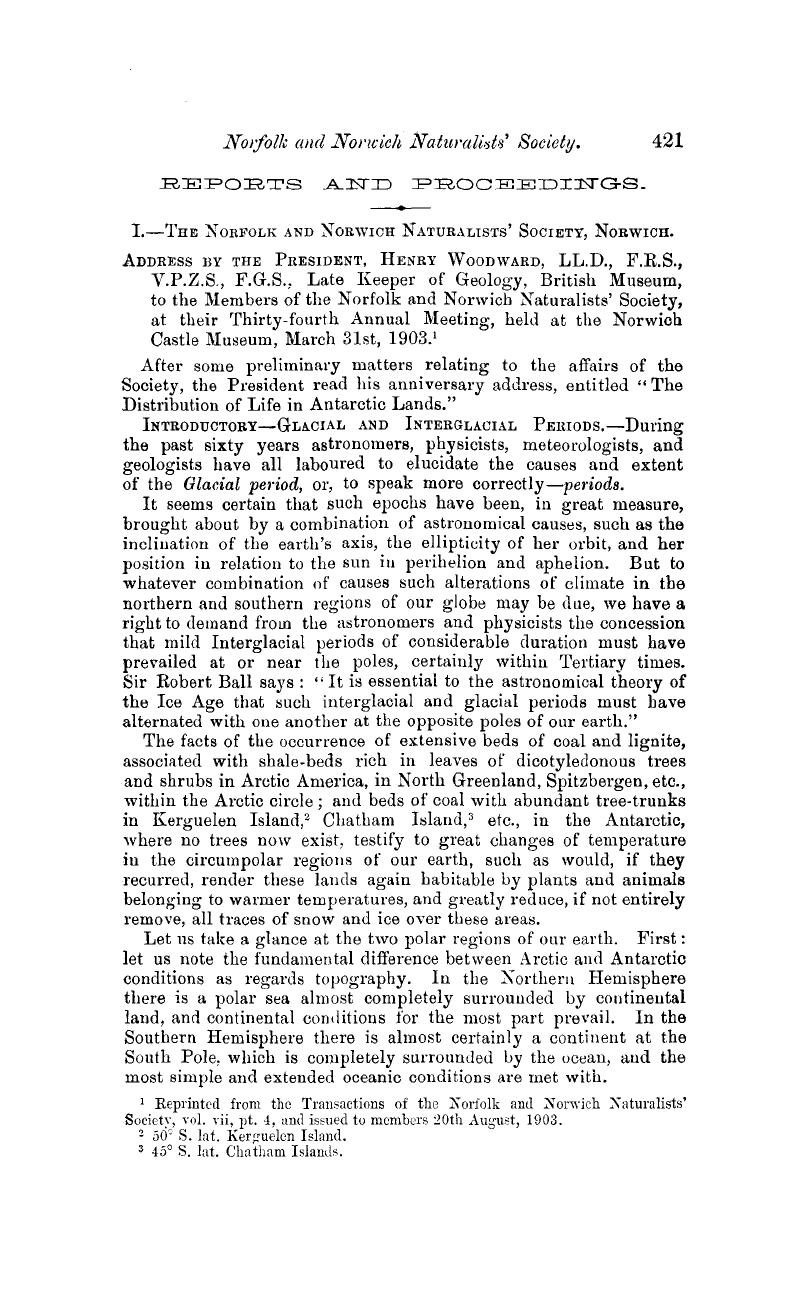No CrossRef data available.
Article contents
Reports and Proceedings
Published online by Cambridge University Press: 01 May 2009
Abstract

- Type
- Reports and Proceedings
- Information
- Copyright
- Copyright © Cambridge University Press 1903
References
page 421 note 1 Reprinted from the Transactions of the Norfolk and Norwich Naturalists' Society, vol. vii, pt. 4, and issued to members 20th August, 1903.
page 421 note 2 50° S. lat. Kerguelen Island.
page 421 note 3 45° S. lat. Chatham Islands.
page 423 note 1 See Murray, Sir John, Proc. Roy. Soc., vol. lxii (1898), pp. 424–451.Google Scholar
page 424 note 1 Fuller details are now before the public since the date of this address, March 31st, 1903, which, however, was not issued until 20th August, 1903, in vol. vii of Trans. N. & N. Nat. Soc., Norwich.
page 425 note 1 According to Ross and many other explorers, great banks of Laminaria and other seaweeds, similar to those around Behring Island, on which the Rhytina fed, abound in the South Polar seas.
page 426 note 1 The great Struthious (wingless) birds of New Zealand were formerly supposed to be the descendants of the makers of the tridactyle footprints left upon the slabs of Triassic sandstone in the Connecticut Valley and elsewhere. These footprints have been described by the late Professor O. C. Marsh, and shown to have been left by bipedal Dinosaurian reptiles, which were living in the Triassic period, before birds had made their appearance.
page 430 note 1 Dr. Woodward's address was illustrated by about fifty-eight lantern slides, a great number of which were beautifully painted pictures of birds by Keulemans, kindly lent by Dr. H. O. Forbes, Director of the Liverpool Museum, and a series of Arctic views and maps kindly lent by the Royal Geographical Society, besides a number prepared expressly for his address by Dr. H. Woodward.


